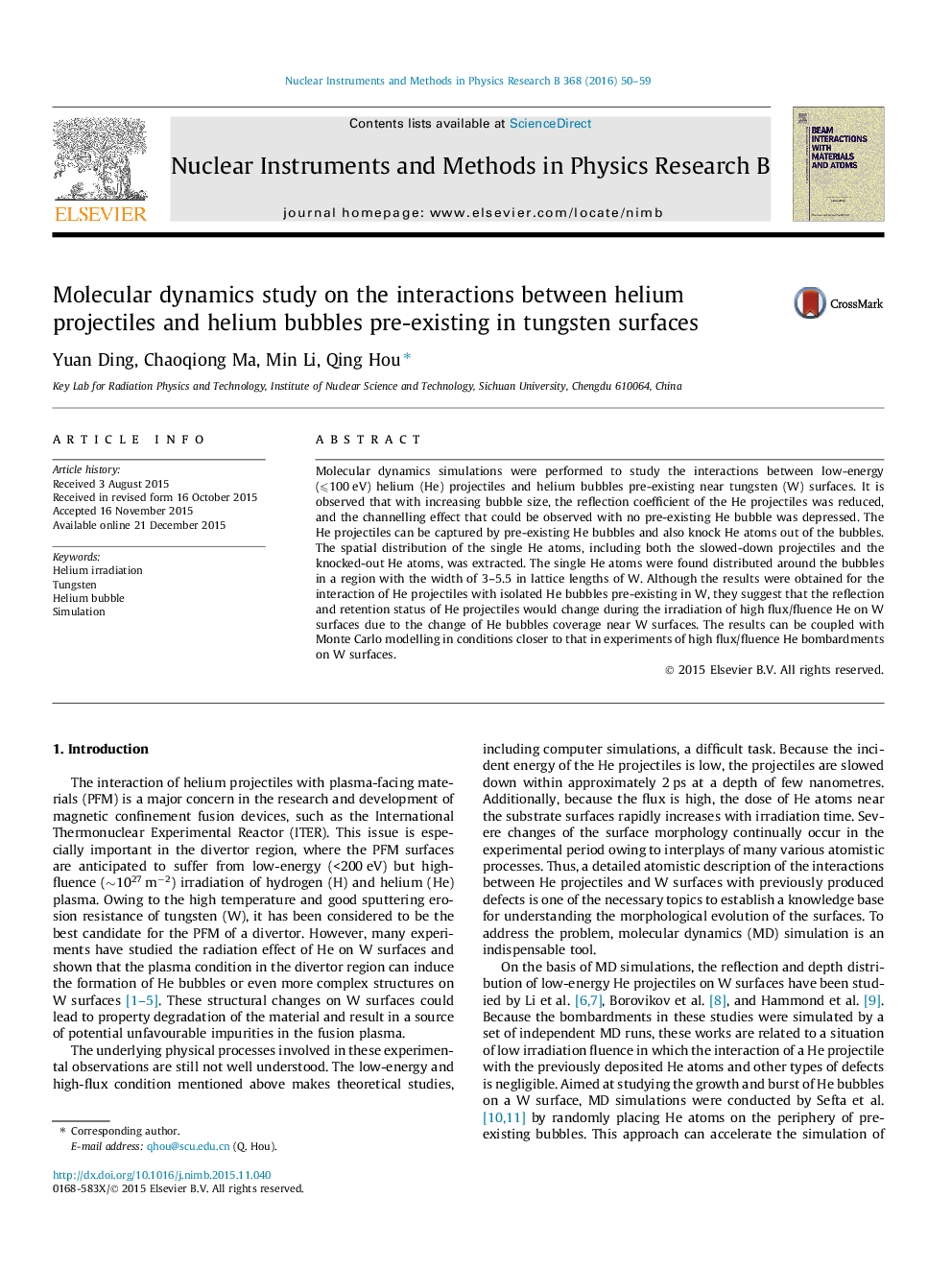| Article ID | Journal | Published Year | Pages | File Type |
|---|---|---|---|---|
| 1681819 | Nuclear Instruments and Methods in Physics Research Section B: Beam Interactions with Materials and Atoms | 2016 | 10 Pages |
Molecular dynamics simulations were performed to study the interactions between low-energy (⩽100 eV) helium (He) projectiles and helium bubbles pre-existing near tungsten (W) surfaces. It is observed that with increasing bubble size, the reflection coefficient of the He projectiles was reduced, and the channelling effect that could be observed with no pre-existing He bubble was depressed. The He projectiles can be captured by pre-existing He bubbles and also knock He atoms out of the bubbles. The spatial distribution of the single He atoms, including both the slowed-down projectiles and the knocked-out He atoms, was extracted. The single He atoms were found distributed around the bubbles in a region with the width of 3–5.5 in lattice lengths of W. Although the results were obtained for the interaction of He projectiles with isolated He bubbles pre-existing in W, they suggest that the reflection and retention status of He projectiles would change during the irradiation of high flux/fluence He on W surfaces due to the change of He bubbles coverage near W surfaces. The results can be coupled with Monte Carlo modelling in conditions closer to that in experiments of high flux/fluence He bombardments on W surfaces.
